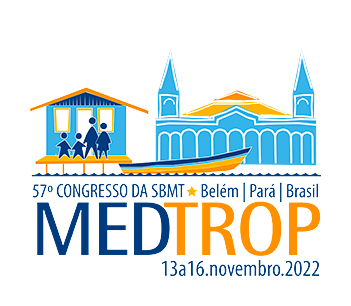Dados do Trabalho
Título
An outbreak of chikungunya in a close-knit religious community that shelters people experiencing homelessness in Salvador, Bahia, Brazil
Objetivo(s)
To investigate an outbreak of chikungunya in a religious community that shelters people experiencing homelessness in Salvador-BA.
Material e Métodos
On November 24, 2019, the Salvador Health Surveillance (CIEVS) was informed of 15 cases suspected of chikungunya virus (CHIKV) infection in a religious community that hosts people experiencing homelessness and stores residuals for recycling. Up to January 31, 2020, 56 out of the 57 community members who lived or had visited the community were interviewed, tested for CHIKV (IgM and IgG ELISA and RT-PCR), and received medical care. Entomological surveys were carried out, and pools of adult mosquitoes were tested by RT-PCR. Eight human and two mosquito pool samples underwent whole-genome sequencing by Illumina platform. Some control actions were made such as breeding site removal, application of larvicides and insecticides, repellents distribution and education (Ethics Committee approval number: 55904616.4.0000.0040).
Resultados e Conclusão
Of the 56 participants investigated, 11 had evidence of prior CHIKV infection (positive IgG and negative IgM). All remained symptoms-free. Of the other 45 individuals, 36 developed acute manifestations and had laboratory confirmation (15 by RT-PCR, two by RT-PCR and IgM, nine by IgM, and ten by IgM and IgG). The community attack rate among non-immune to the CHIKV was 80% (36/45). Of the nine individuals who remained asymptomatic, only one had IgM and IgG antibodies, which likely represent an asymptomatic infection; all the other eight were negative. Of the 37 confirmed infections, 36 (97.3%) were symptomatic. These 36 cases had a median age of 45 years and 58.6% were male. Fever was reported by 97.2% and arthralgia by 86.1%. The entomological inspection collected 419 adult mosquitoes (369 (88.1%) Aedes aegypti), which comprised 93 pools for RT-PCR testing. Of them, 13 (14%) were positive: 6 of Ae. aegypti, 5 of Culex quinquefasciatus, and 2 of Ae. scapularis. Phylogenetic analysis of human and mosquito pool samples showed that they have the same ECSA ancestor and were clustered in the same clade. Despite the control actions implemented, this local outbreak continued, reaching an extremely high attack rate and causing symptoms in 97% of those infected. A single ECSA strain caused the outbreak. Our findings highlight the risk of rapid CHIKV spread in areas highly infested by Ae. aegypti and point to the difficulty of controlling an outbreak in such a setting.
Palavras-chave
Chikungunya virus, outbreak, entomology, community, phylogenetic
Área
Eixo 10 | Outras infecções causadas por vírus
Categoria
NÃO desejo concorrer ao Prêmio Jovem Pesquisador
Autores
Moyra Machado Portilho, Cristiane Wanderley Cardoso, Rosângela Oliveira dos Anjos, Lorena Gomes Santos, Raquel Lima de Souza, Romero Nazaré, Leile Camila Jacob-Nascimento, Mirela Maísa da Sila Souza, Felipe Gomes Naveca, Mitermayer Galvão Reis, Guilherme Sousa Ribeiro
